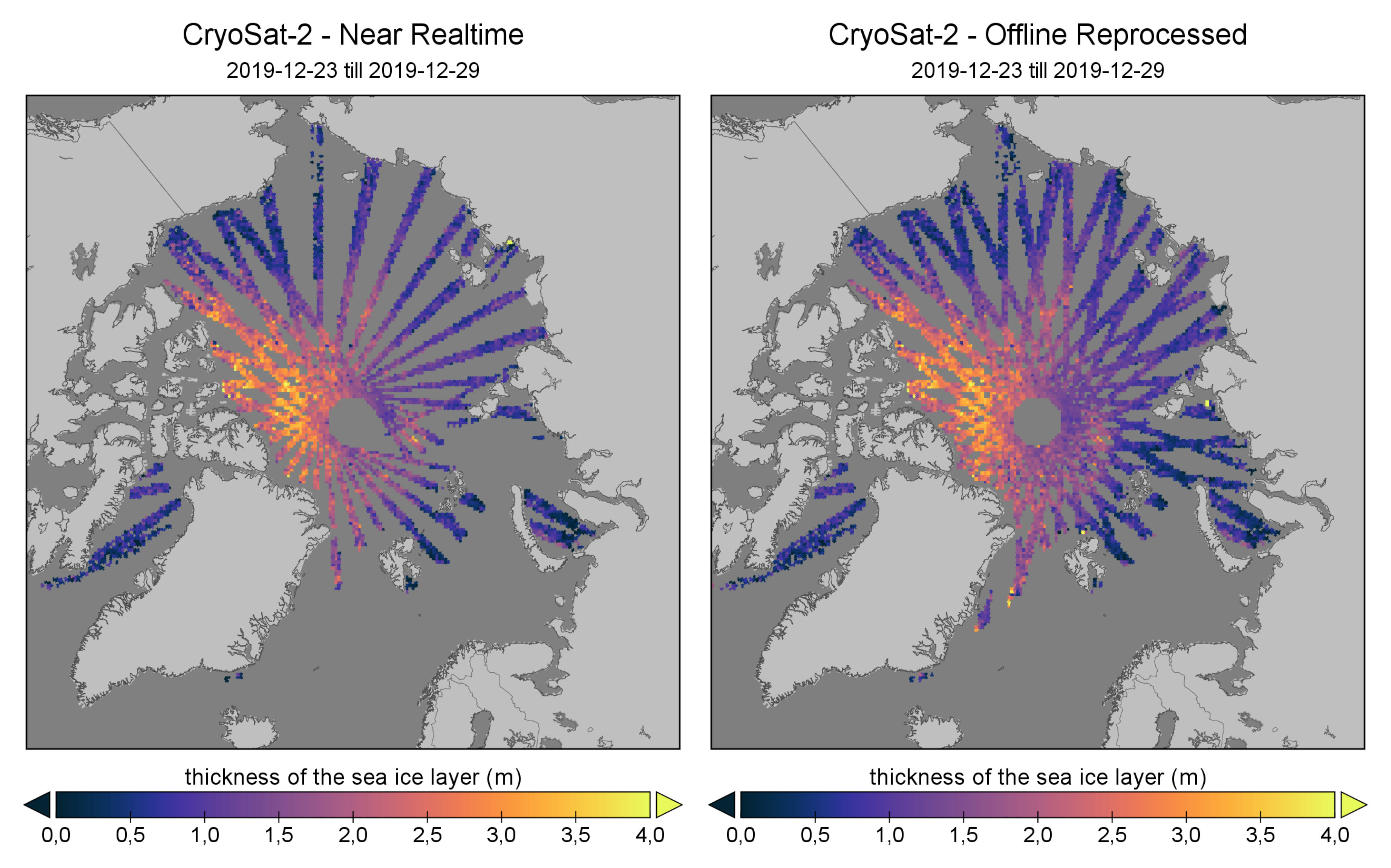The Copernicus Climate Change Services (C3S) interim climate data (ICDR) record for sea-ice concentration has been discontinued in anticipation of a version update from January 1st, 2020 onwards. This affects the production the CryoSat-2 sea-ice thickness data product with the reprocessed timeliness (+31 days). The source for sea-ice concentration in the data processor has been changed to the designated successor of the C3S sea-ice concentration ICDR: OSI-SAF sea-ice concentration ICDR (OSI-430-b). This presents a minor change of the algorithm, as the new ICDR has a lower resolution (25km) than the C3S ICDR (10km). All sea-ice thickness products based on reprocessed CryoSat-2 data from January 1, 2020 are therefore of version 2.2.1. The near-real time sea-ice thickness product is not affected, as it uses OSI-SAF operational sea-ice concentration and type input.
An issue has been identified with CryoSat-2 near-realtime (NRT) data for algorithm baseline-D: The NRT Level-1 data to the CryoSat-2 sea ice product is missing several orbits, mostly in the Russian Arctic as can be seen in the figure below. The offline reprocessed data, which trails the NRT data by one month is not affected by this issue. ESA is aware of the problem and in the process of developing a fix that will be implemented at a later stage.
NRT data is available with a delay (timeliness) of 2 days, offline-reprocessed with a delay of 31 days. All users should be aware that any of data products or analysis based on CryoSat-2 NRT sea ice data (tag `nrt` in filename) are currently degraded and should use the reprocessed data stream (tag `rep` in filename) instead.
The merged CryoSat-2/SMOS sea ice data set is also uses CryoSat-2 NRT data and is affected by this issue. The impact on data quality is under investigation as the merging algorithm is forgiving in terms of data gaps.
Any update will be posted on this blog.
See Data Access for access of NRT and reprocessed CryoSat-2 sea ice data
